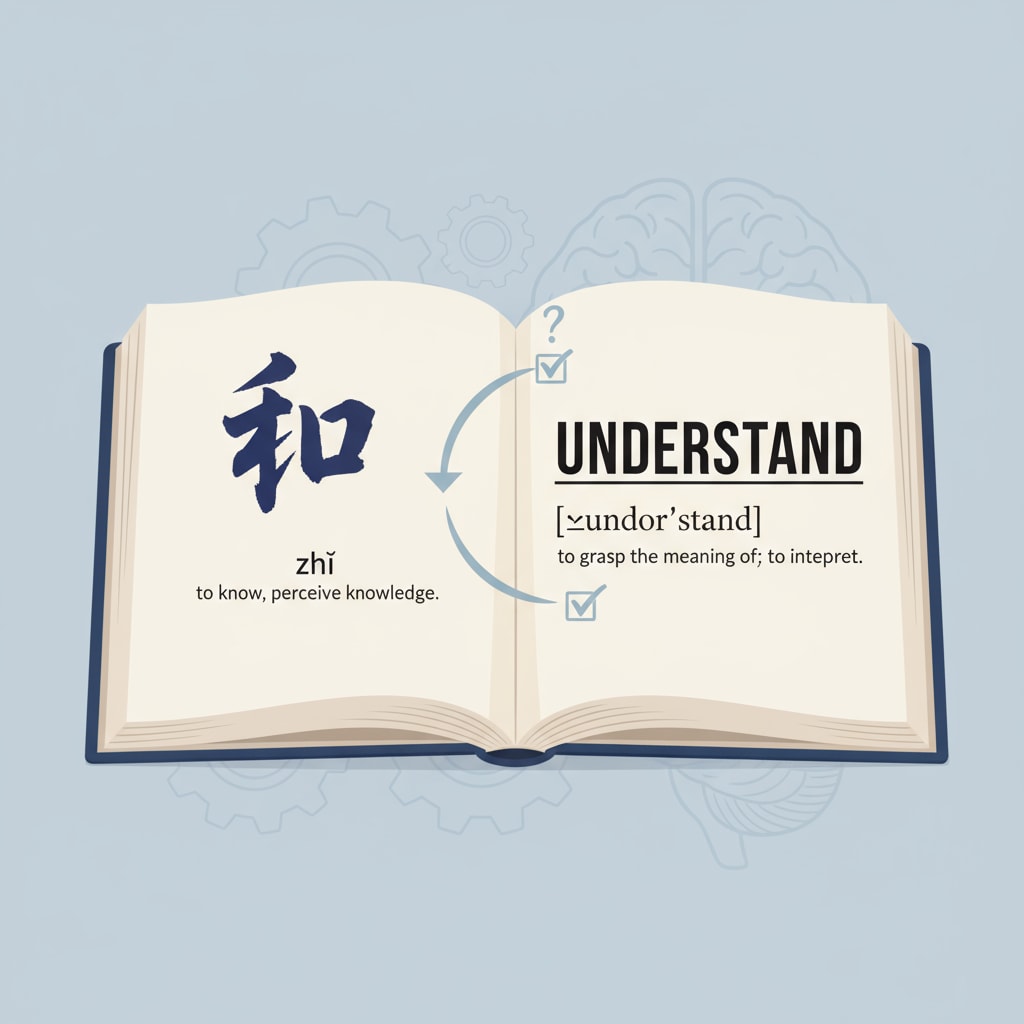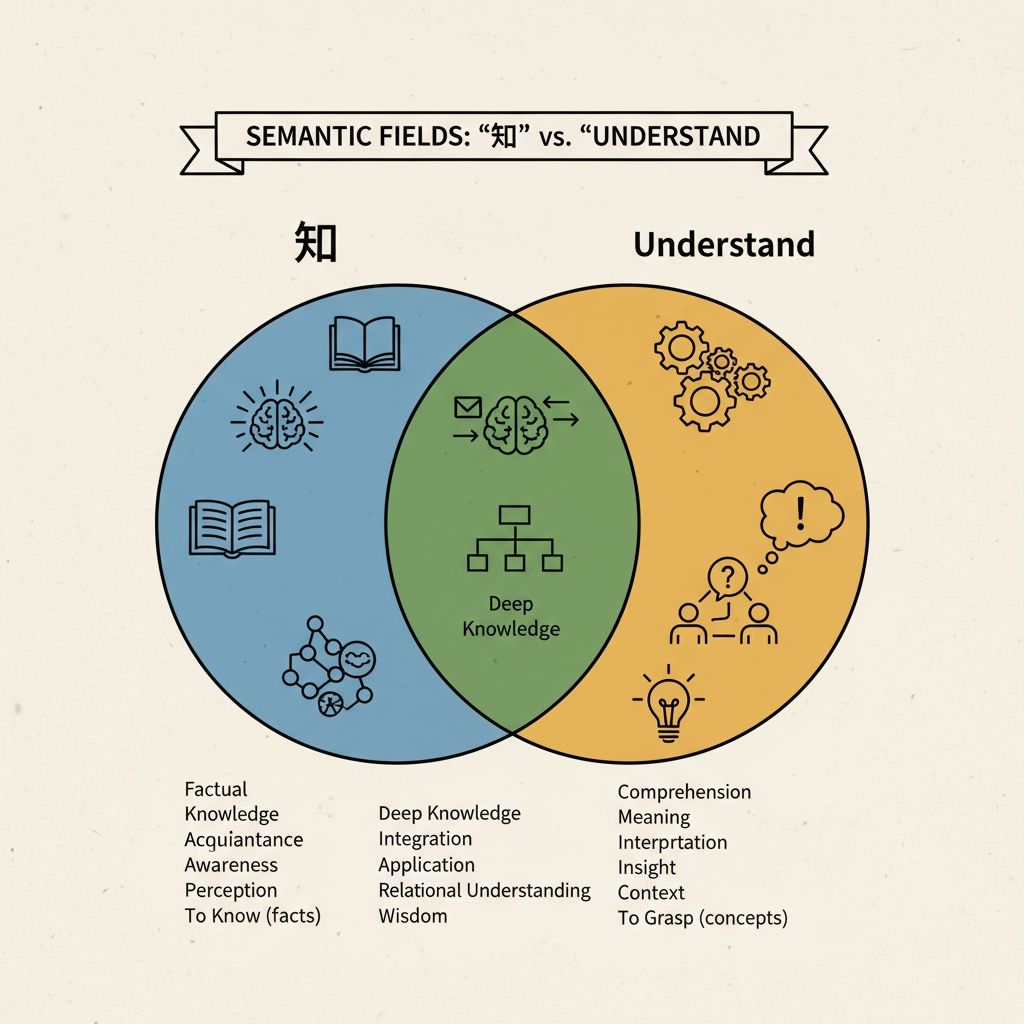The comparison of “知” in Chinese and “understand” in English reveals profound language differences and cultural thinking. Language is not just a tool for communication but also a reflection of a culture’s values and ways of thinking.

This article aims to dig deeper into these concepts and their implications in education.
The Semantic Nuances of “知” and “Understand”
In Chinese, “知” has a broad range of meanings. It can simply mean “to know” in the sense of having information. For example, “我知道这个事情” (Wǒ zhīdào zhège shìqing), which translates to “I know this thing”. However, it also implies a more surface-level acquaintance. On the other hand, “understand” in English conveys a deeper comprehension. As per Wikipedia’s entry on the English language, “understand” often involves grasping the meaning, significance, or essence of something. It’s not just about having knowledge but also making sense of it.

Cultural Roots of the Linguistic Disparities
The difference in these words reflects the cultural thinking of the East and the West. Chinese culture, deeply influenced by Confucianism and Taoism, values collective wisdom and harmonious coexistence. The concept of “知” might be related to this cultural context where having general knowledge within a community is important. Western culture, influenced by rationalism and individualism, emphasizes in-depth analysis and personal understanding. This cultural divergence is evident in the semantic differences between “知” and “understand”. According to Britannica’s article on cultural studies, such linguistic nuances are manifestations of broader cultural values.
Understanding these cultural roots is crucial as it helps us realize how language shapes our perception of the world. For instance, in Chinese education, rote learning which focuses on “knowing” facts might be more prevalent initially, while Western education often encourages students to “understand” through critical thinking and in-depth exploration.
Readability guidance: As seen above, we have used short paragraphs to clearly present ideas. The information about cultural roots is presented in a straightforward manner, with each sentence flowing smoothly. Transition words like “however” and “for instance” are used to enhance readability.


